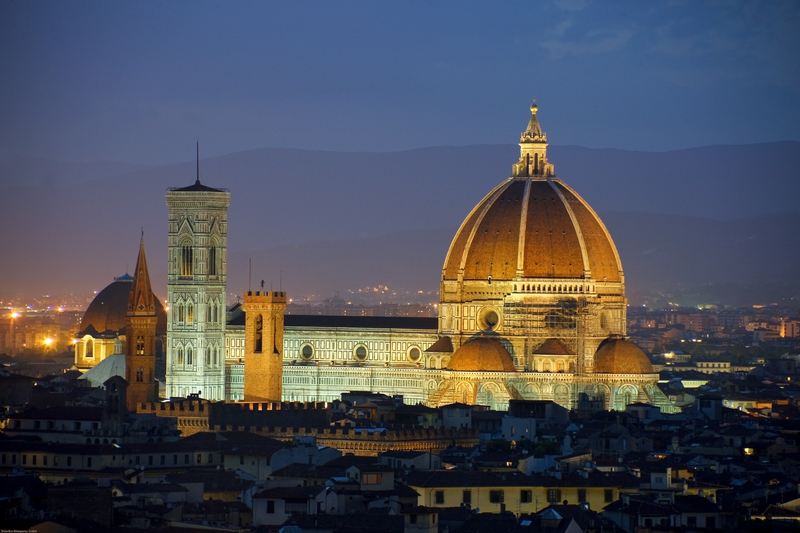If you are a visitor to Florence, Italy you must be certain to spend some time in the Centre District. Many of the city’s most impressive sights are here in the center of the city, and you won’t want to miss the opportunity to see them for yourself. Conveniently, the district is not very spread-out, so you can see several fantastic landmarks within just a few blocks of each other. If you have only a day to spend in Florence, this would be an excellent place to spend it since you will be able to see so much in such a short time.
 The Cathedral, otherwise known as the Duomo, is found in the center of Florence, along with the baptistry. Its proper title in English is the Basilica of Saint Mary of the Flower, and the cathedral reflects that lovely name. Along with the richly ornamental doors and the finely sculptured marble walls, the cathedral boasts 44 gorgeous stained glass windows created in the 1300s and 1400s. Construction on the cathedral began more than seven centuries ago, and several noted artists and architects had a hand in the design of this beautiful building whose golden dome towers over central Florence.
The Cathedral, otherwise known as the Duomo, is found in the center of Florence, along with the baptistry. Its proper title in English is the Basilica of Saint Mary of the Flower, and the cathedral reflects that lovely name. Along with the richly ornamental doors and the finely sculptured marble walls, the cathedral boasts 44 gorgeous stained glass windows created in the 1300s and 1400s. Construction on the cathedral began more than seven centuries ago, and several noted artists and architects had a hand in the design of this beautiful building whose golden dome towers over central Florence.
The Cathedral Square, or Piazza del Duomo, also includes the beautiful spectacle of Giotto’s Bell Tower, a splendid example of Gothic architecture, and the Museum of the Works of the Cathedral, which houses magnificent works of art connected with the cathedral, including the handiwork of Michaelangelo and Donatello. With its rich history, this is a definite must-see for any art enthusiast.
Another impressive sight in this district of Florence is the Ponte Vecchio, which is the bridge that stands over the Arno River. In addition to its structural beauty, which dates back to medieval times, the bridge is notable because it is lined with shops. While many bridges of that time were similarly lined with shops, that is not the case for many bridges that stand today, so it’s especially fun to wander these stores and buy the art, jewelry and souvenirs that is sold inside of them.
If you are planning a visit to Florence and looking for accommodation in the Centre District or all over the city, check out Oh-Florence where you can find a huge selection of apartments to suit your every need. Clearly, this central portion of Florence has a great deal to offer any visitor with a deep and abiding interest in art, culture and history, and its magnificence is such that it is likely to foster such an appreciation in others as well.






